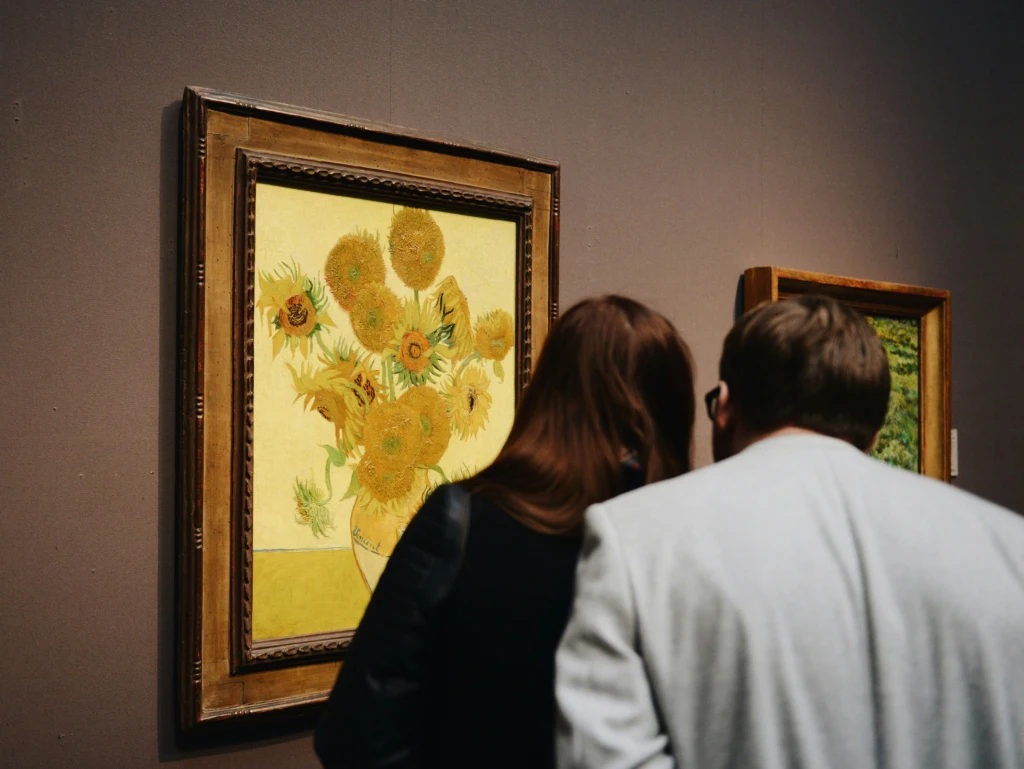
Planning for Earth Day conversations can give educators pause. In the attempt to create a sense of urgency for climate action, we might decide to subject our students to a parade of dire statistics. This onslaught of information can have the opposite effect: instead of moving students from inaction to action, we can inadvertently move them from inaction to despair. When aiming to equip students with the knowledge needed to take action, we can try to anticipate this common side effect of information glut. One way we can do this is to use visual texts as a hook.
Offering opportunities that allow students to slow down and engage in slow looking can create receptivity to environmental calls to action that are otherwise ignored. The lesson steps described below sparked interesting discussion in my classroom, and I hope they can serve your students, too!
Step 1: Give your students time to browse the A Few Degrees More exhibit at the Leopold Museum in Vienna and to spend time gazing at the fifteen paintings displayed. Through a collaboration with the Climate Change Centre Austria and renowned scientists from various fields, the museum exhibitors were able to determine the precise number of degrees by which climate change would impact the landscapes depicted in the painting and how it would affect the natural environments captured by the artists. Observing the tilted artwork literalizes the concept of “tipping point” in a way that provokes thoughtful scrutiny. A tipping point is the critical point in a situation, process, or system beyond which a significant and often unstoppable effect or change takes place. How does looking at the tilted paintings make an abstract concept more concrete?
Step 2: Invite students to choose one of the paintings for a focused study and to parse out given details about the painting in a quadrant organizer as I have done, shown below. Based on the suggestions offered in the painting label, “See What We Can Do,” ask students to “translate” recommended solutions into action steps we can take.

Step 3: To help students articulate their action steps, consider modeling the activity. For example, the museum exhibit offered suggestions for protecting forests. As I found out about organizations that are already doing this important work, I used a Padlet to keep track of them and identify the actions I can take:
- Conserve trees and forests in your area. Find out the voting record of your representative and urge their support for expanded protection of forests (League of Conservation Voters Scorecard (lcv.org)
- Restore native ecosystems (volunteer with a land trust near you or an organization that restores depleted landscapes like TreePeople)
- Support forest conservation organizations (National Forest Foundation (nationalforests.org))
- Learn about forests, both local and global (Learn About Forests – Project Learning Tree (plt.org))
- Use purchasing power to buy forest-friendly products (Rainforest-friendly purchasing guide – TREE Foundation)
Step 4: Reflect with your students about the unique learning opportunities afforded by the tilted paintings. How does art make us more receptive to scientific warnings? I look forward to brainstorming more ways to help students envision climate change scenarios that invite conversation, not avoidance.
-Xochitl
How do you design lessons that foster climate change literacy? What entry points have worked in your classroom? Share your reflections in the comments below or find me on Twitter @dispatches_b222.
At Moving Writers, we love sharing our materials with you, and we work hard to ensure we are posting high-quality work that is both innovative and practical. Please help us continue to make this possible by refraining from selling our intellectual property or presenting it as your own. Thanks!
